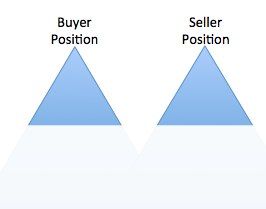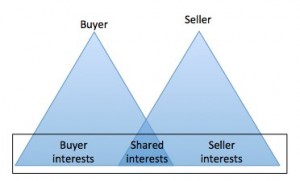By Alan Armstrong
Have you ever heard this story before?
The lead came in, and it looked hot. We gave it to our best rep, who called right away. Gotta strike while the iron is hot, as they say. The rep asked all the qualifying questions, and it looks like a huge opportunity. They have budget and are ready to move. She sets up a meeting, the SE does a few slides and a demo, everyone seems happy. They ask for a quote, we send it.
You know what comes next, right?
Silence.
Welcome to the stuck deal. Sales reps, sale teams, sales managers, and sales VPs see this all the time. In the midst of some win/loss analysis work, several of my clients have started to send these deals to me. “See what you can find out,” they say.
Here are a couple of the most common findings:
No access to decision maker or other key players
- Once the demo and presentation are done and the quote is sent, the buyer has everything they need.
- Unfortunately the seller doesn’t have what they need. What they need is a PO, or access to the people who can reprioritize investments to make the deal happen. Often they are stuck at a lower organizational level.
- Even more unfortunate, it’s hard if not impossible for the seller to reset the conversation. That’s because they’ve given everything they have to the buyer without asking for anything in return.
Unqualified Champion
- The person we are selling to lacks the courage, acumen, or clout to access internal company resources.
- While the opportunity was qualified, the champion was not. Our qualification questions need work. In fact, we should be DISqualifying rather than qualifying the champion.
Cost/Benefit is not demonstrated or not believed
- As much as the champion likes our product, they haven’t been able to justify it to the people who can really make the decisions internally.
- In some cases, we’ve given them cost/benefit numbers, but they were simply not believed internally.
- Like it or not, that’s our failure rather than our champion’s failure.
What happens here is that two parties end up in a stalemate. In negotiation theory, this is described as arriving at two different, or diverging, positions. It’s like they’ve walked up to the top of two mountains and are now separated by a valley in between.
In most cases, because the seller is selling, they have lost the ability, or the permission from the buyer, to move down the mountain from the divergent position to the underlying interests of the buyer. A really good seller can do this sometimes, but often the buyer simply stops responding at a certain point, and if you can’t get the conversation started, it doesn’t matter how good you are.
What’s needed in these cases is to walk down the mountain to the underlying interests. These conversations reset the discussion and re-build the relationship map from the ground up.
When I have these conversations I have an advantage over the seller: I’m not selling. So it is a little easier, perhaps, to reset the conversation. In some cases, the overlapping interests are so small that they do not justify further sales activities. We “put a fork in it”, as they say. The account may need to go back to marketing for further nurturing, or maybe it really is just dead. If so, move on! In sales, my favorite four letter word is “N-E-X-T”, because we don’t have time to waste on non-opportunities.
In many cases, however, the overlapping interests are significant, and when reexamined in this way, the buying discussion can be reset. I’ve helped a client reset, and eventually close, a $5M deal as the result of a one hour phone call. Without that call, the CEO told me, they would have lost the business.
But the secret to unsticking the stuck deal is the same, regardless of who does it:
- Reset the discussion entirely. The seller can, for example, withdraw an earlier quote after a certain time. This is a really invigorating thing to do for a seller because it tells the buyer that they no longer have all the power.
- Go back to square one and re-diagnose, re-qualify, and even try to DISqualify the opportunity. The seller missed something big in the first round of qualification and selling, so all assumptions about the account need to be thrown out the window. It can sometimes be hard for the same rep to do this work because they may need a fresh set of eyes to see the account.
- Look at the common pitfalls listed above. What happened the first time? How can you avoid the same thing happening again.
- Most importantly, rebalance the power in the buyer/seller relationship. Sellers are often so insecure that they undervalue what they have to offer, including their own time and many company resources. The attitude needs to change if you are going to unstick the deal.
I will be touching on this topic at Product Camp Silicon Valley on Saturday April 2. My talk is called “It’s never about price: The real reasons behind 250 B2B buyer interviews“, and will be held at 11am. Hope to see you there.
– Alan
Previous articles in this series:
Tweet this: New post @onpm: “Unsticking the stuck deal” http://bit.ly/unstick by @AWArmstrong #sales #marketing #prodmgmt #prodmktg #negotiation

